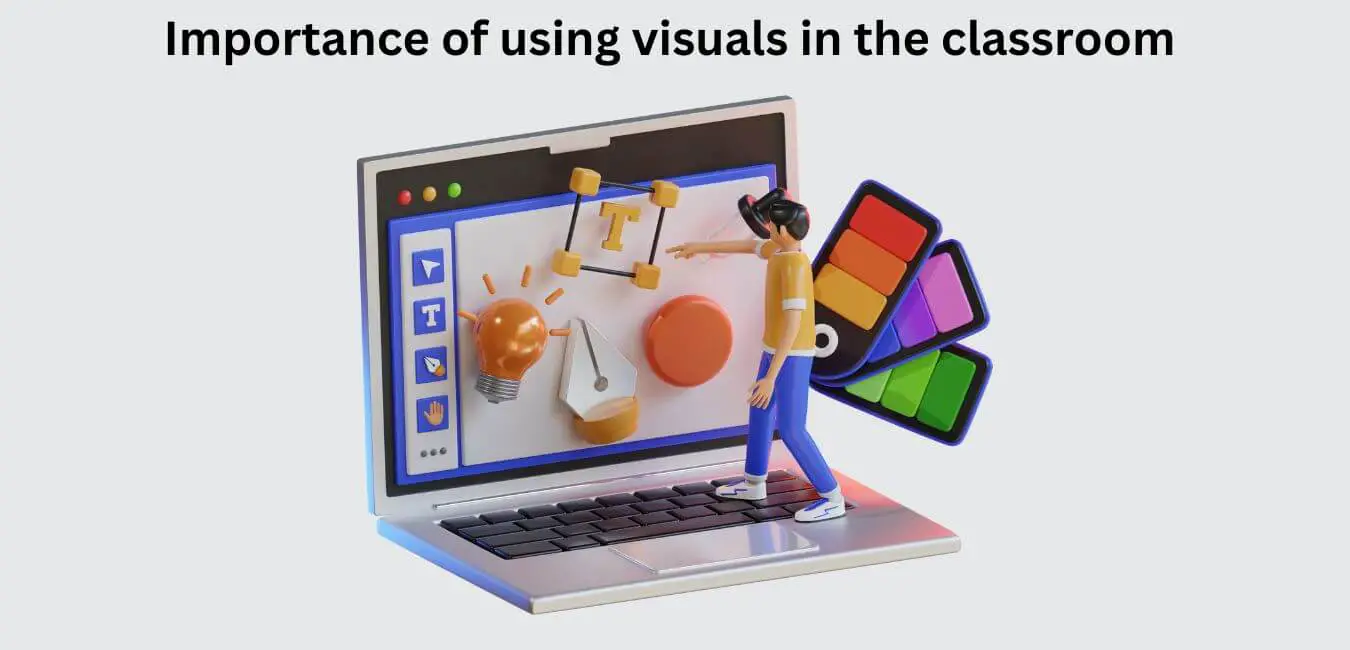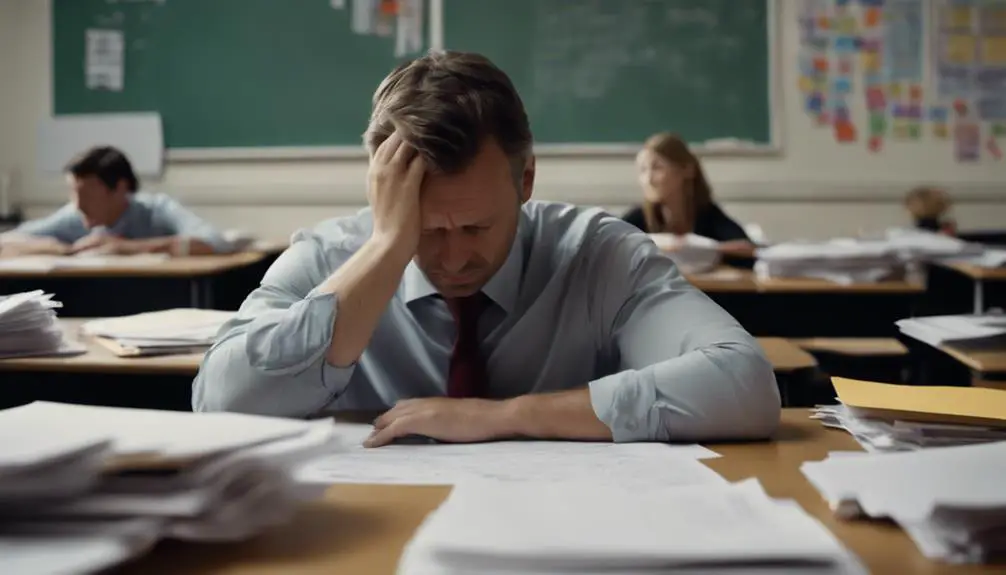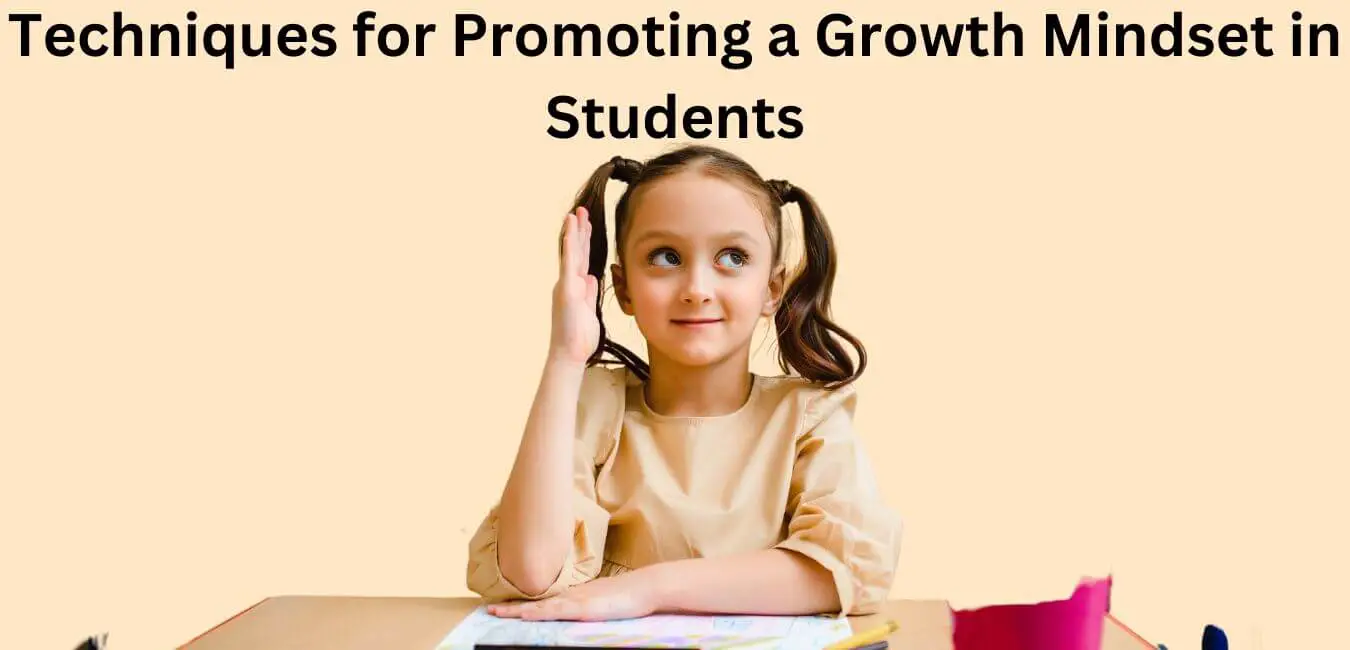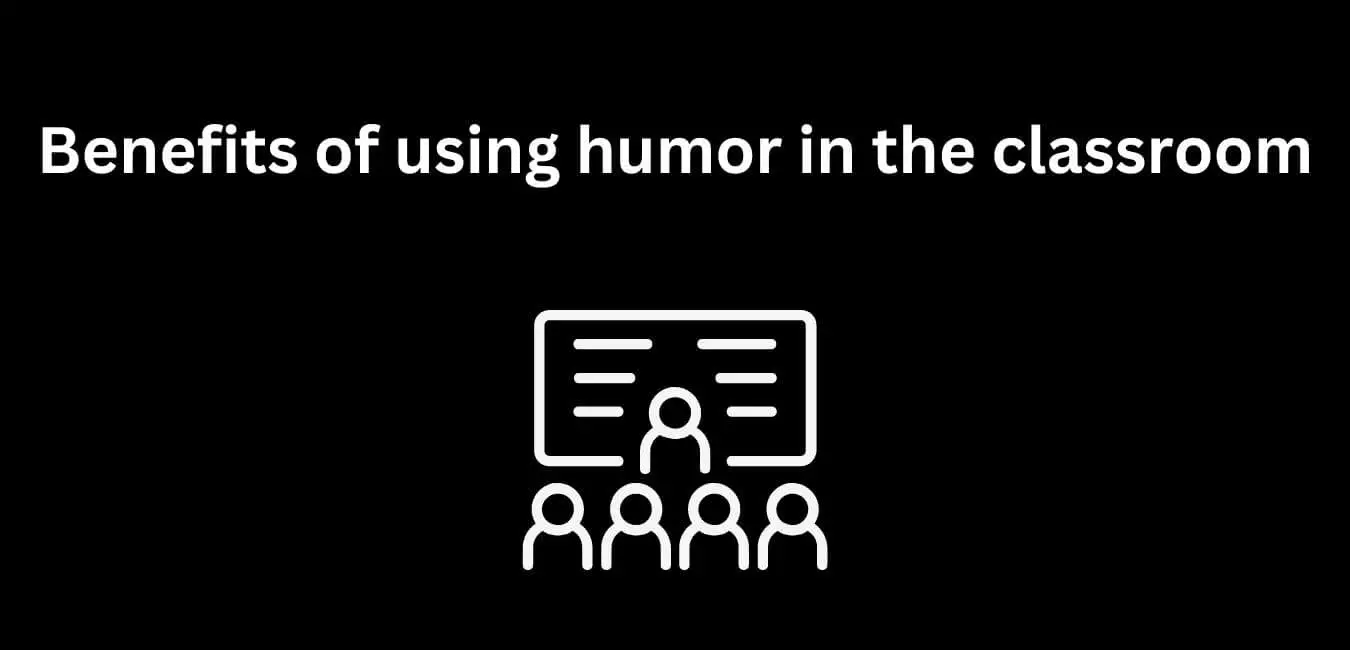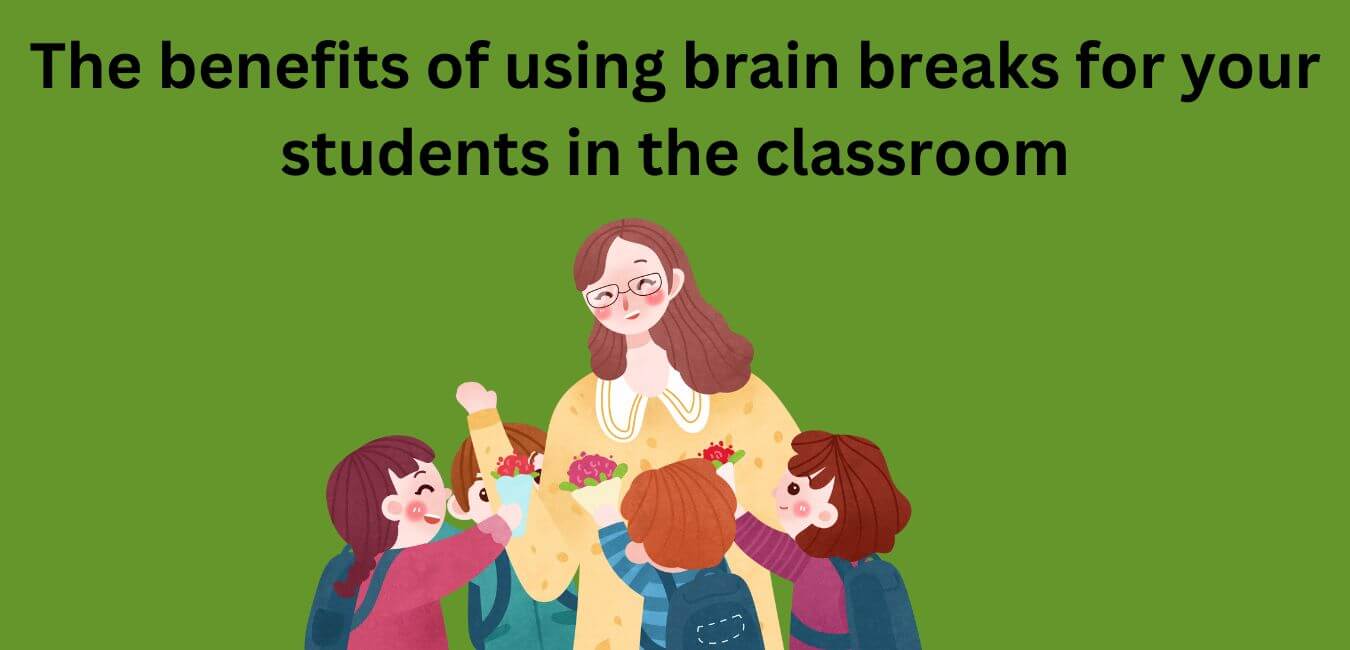The use of visuals in the classroom is a great way to engage students and help them learn. Visuals can also be beneficial for teachers, making lessons easier to plan and helping to keep students interested.
In this article, we will explore the 19 important benefits of using visuals in the classroom. From improving student engagement to making lessons more interesting, we will look at how visuals can be used to make learning more effective.
Benefits of Using Visuals in Your Classroom
Visual aids can be incredibly effective tools for engaging and instructing students in a classroom setting. Here are 19 key benefits of using visuals in your classroom:
1. Visuals help to grab students’ attention and maintain their focus, particularly when used at the beginning of a lesson.
Visuals play a crucial role in capturing students’ attention and maintaining their focus throughout the lesson. Teachers can incorporate a variety of visual aids, such as pictures, videos, graphs, and charts to support their lectures. At the beginning of the class session, visuals can be especially effective in piquing students’ curiosity and encouraging them to participate actively. For instance, teachers can show an image or video that relates to the topic being discussed to stimulate student’s interest and inspire questions.
Moreover, using visuals in teaching is a great way to cater to different learning styles because it enables students with different types of intelligence to comprehend information more effectively. Visual learners tend to absorb new material better when they see it represented graphically rather than reading about it from textbooks or hearing about it from lectures. Similarly, kinesthetic learners benefit from seeing diagrams or models that they can interact with physically while auditory learners find animations helpful for visualizing abstract concepts. By utilizing various forms of multimedia content throughout their lessons, educators have a better chance of reaching each student in their class no matter their preferred learning style.
2. They make complex or abstract concepts easier to understand by breaking them down into more digestible parts.
Using visuals in the classroom is an excellent way to make complex or abstract concepts easier for students to understand. By breaking down these ideas into more digestible parts, visual aids like flowcharts, diagrams, and illustrations can help learners grasp difficult concepts with greater ease. This is especially important when topics are particularly technical or scientific, and may be challenging for some students to comprehend through text alone.
Visuals can also help students remember information more easily. When learning new material, our brains use two types of memory: short-term and long-term. Visual aids can help move information from short-term memory into long-term memory by triggering associations that make it easier to recall later on. Additionally, visuals can serve as prompts during exams or assignments and help reinforce key points that might otherwise be forgotten.
Overall, incorporating visual aids into the classroom has numerous benefits beyond making complex ideas easier to grasp. They stimulate engagement by providing a change of pace from traditional lectures or reading materials and create a more vibrant learning environment overall which leads to higher levels of student interest and motivation.
3. Graphics and images can provide an emotional connection that enhances learning and retention.
Not only do graphics and images make content more visually appealing, but they also have the power to enhance emotional connection with the material being presented. Research has shown that when learners are emotionally engaged, they are more likely to pay attention and retain information. In fact, studies have found that visuals can increase retention rates by up to 65%.
Moreover, visuals can convey complex ideas and concepts in a more simplified form, making it easier for students to understand and remember them. For instance, diagrams or infographics can help students visualize relationships between different ideas or data sets. Additionally, images can be used as memory cues – associating an image with a piece of information helps the brain retain it better.
Incorporating visuals into classroom teaching not only makes learning fun but also improves cognitive functioning in students. By spicing up lectures with relevant graphics and images, educators foster deeper understanding among learners while simultaneously making the learning process engaging and memorable.
4. They help to create a more immersive learning experience, making it easier for students to connect with the subject matter.
Visuals such as images, videos, and infographics are essential in creating an immersive learning experience for students. They enable learners to connect with the subject matter by making it more relatable and understandable. For instance, when studying history, showing images of famous historical events can transport students back in time and allow them to visualize what life was like then. Additionally, visuals can assist in clarifying complex topics that may be difficult to understand through words alone.
Visuals also have an impact on retention rates among learners. According to research studies, people remember 80% of what they see compared to only 20% of what they read. This means that incorporating visuals into classroom instruction is crucial in helping students retain information better. Moreover, using visuals encourages active engagement among students during the learning process since it stimulates their visual senses.
Overall, the use of visuals in classrooms enhances the learning experience by providing a dynamic way of presenting information that is both engaging and effective for all types of learners. It promotes creativity and critical thinking skills while improving student’s ability to remember important content long after lessons have been taught.
5. Visual aids can help teachers differentiate instruction by presenting information in multiple formats (e.g., text, images, diagrams) that appeal to different types of learners.
Visual aids are a powerful tool for teachers to differentiate instruction and present information in multiple formats that cater to different types of learners. By integrating visual elements such as images, diagrams, and videos into their teaching materials, educators can engage students who learn best through visual cues rather than just text-based lessons. This approach also helps to promote retention by allowing students to visualize concepts more easily.
Moreover, visuals provide a common language between teacher and student that can help bridge communication gaps caused by differing learning styles or language barriers. For example, students who speak English as a second language may find it easier to understand complex concepts when they are presented visually. In addition, using visual aids in the classroom promotes active learning by encouraging students to participate and ask questions about what they see on screen.
Overall, the use of visual aids offers an array of benefits in the classroom setting. It caters to different learning styles while promoting retention and engagement among all students. From charts and graphs to videos and illustrations, incorporating visuals is an effective way for teachers to improve their teaching methods and enhance student learning outcomes.
6. They facilitate communication between teacher and student by providing a shared reference point for discussion and feedback.
Visuals are an effective way to facilitate communication between teachers and students. By using visuals in the classroom, educators can provide their students with a shared reference point that they can refer back to when discussing lessons or receiving feedback. This not only helps to ensure that everyone is on the same page, but it also enables teachers to better understand how their students are interpreting and processing information.
Visual aids can be particularly useful for learners who struggle with verbal communication, as they offer an alternate way of expressing thoughts and ideas. For instance, visual aids such as diagrams, charts, and maps can help students visualize complex concepts in a more concrete way than words alone would allow. Additionally, visuals can be especially helpful for visual learners who need to see something before they fully understand it.
Overall, the use of visuals in the classroom provides multiple benefits for both teachers and students alike. They create a common ground for discussion and feedback while catering to different learning styles at the same time. With so many advantages on offer, it’s clear why visuals should play an important role in any teacher’s toolkit.
7. Illustrations and diagrams are particularly useful in science classes because they allow students to visualize complex processes like photosynthesis or cellular respiration.
Illustrations and diagrams are essential tools in science classes as they help students better understand complex processes. Photosynthesis, for example, is a process that can be challenging to grasp without visual aids. However, an illustration showing the chloroplasts and thylakoids within a plant cell can quickly clarify how light energy is converted into chemical energy.
Similarly, cellular respiration is another process that can benefit from illustrations and diagrams. Breaking down glucose into ATP via glycolysis, the Krebs cycle and the electron transport chain may sound like an abstract concept at first glance. But when students have access to well-crafted diagrams of these processes, they gain a deeper understanding of how living organisms produce energy.
Moreover, visual aids such as illustrations and diagrams also appeal to different learning styles – some people prefer learning through visuals over reading or listening. By catering to multiple learning styles in the classroom with visual aids, teachers can ensure all their students are engaged with the material being presented.
8. Using visual aids helps keep pace with today’s technology-dependent world where children have grown up using tablets, smartphones, etc., which makes them adapt better when they see something visually attractive on a screen than just hearing about it.
Visual aids are an essential tool in modern-day classrooms. The use of visual aids helps keep pace with today’s technology-dependent world where children have grown up using tablets, smartphones, etc. This makes them adapt better when they see something visual in the classroom. Visuals make learning more interactive and engaging for students, which leads to better retention of knowledge.
Incorporating visuals into teaching strategies can also help students who have difficulty understanding concepts through traditional teaching methods such as lecture-based learning or reading textbooks. Visuals provide a way for these students to comprehend information in a more accessible and meaningful way, leading to improved academic performance.
Moreover, visual aids can be used to break down complex ideas into simpler ones, making challenging subjects easier to understand. Teachers can utilize various types of visuals such as diagrams, charts, videos or infographics for this purpose. These tools not only help students grasp abstract concepts but also enhance their understanding of real-world applications of academic material. Overall, the use of visual aids is crucial in creating an effective and inclusive learning environment that caters to all types of learners.
9. Visuals aid memory retention, as people remember pictures better than words; therefore, seeing something visually increases the chances of remembering it long-term.
Visuals are essential tools for educators to increase engagement in the classroom. They help students remember and understand information more effectively. According to research, visuals aid memory retention, as people remember pictures better than words. When students see something visually, it increases the chances of remembering it long-term.
Visuals also help students process information quicker than text alone. Images and graphics can convey complex ideas in a simple way, making them easier for students to comprehend. Visuals provide an opportunity for teachers to present information creatively, allowing them to keep the attention of their audience for longer periods.
Moreover, visuals can be used as a tool for differentiation in the classroom by providing different learning experiences that cater to various learning styles. For example, visual learners need images and diagrams to understand concepts while auditory learners prefer explanations through sound and music. By incorporating different types of visuals such as videos and infographics into lessons, educators can make sure every student is engaged and has equal access to knowledge.
10. Visuals increase motivation levels among students as colorful images break through monotony, making learning fun.
Visuals have the power to increase motivation levels among students, making learning more fun and engaging. Colorful images break through the monotony of reading textbooks or listening to lectures, helping students retain information better. When visuals are used in the classroom, students can visualize concepts and ideas, which makes it easier for them to understand complex topics. This is particularly helpful for subjects that require a lot of memorization, such as history or science.
Moreover, visuals can help create an inclusive learning environment where all students feel they belong. Visuals provide a universal language that transcends cultural barriers and helps students with diverse backgrounds relate better to one another. They also help teachers cater to different learning styles by providing opportunities for visual learners to absorb information in ways that best suit their needs.
Finally, using visuals in the classroom helps prepare students for life beyond school since many jobs require visual communication skills. Whether it’s creating presentations or designing marketing materials, having a strong understanding of how visuals work will be valuable in any future career path. So not only do visuals make learning more fun and engaging but they also equip students with important skills that they can use throughout their lives.
11. Visuals are a great way to introduce new concepts that may be hard to understand at first but become easier once they’re explained visually.
Visual aids are an essential tool in the classroom as they help to introduce new concepts that may be difficult to understand. For instance, subjects such as science and mathematics rely heavily on diagrams, charts, and other visual aids to explain complex ideas clearly. Students can easily grasp abstract concepts when presented with visual representations of them.
Visuals also help students develop their critical thinking skills by allowing them to analyze information presented in a different format. They can evaluate the content, identify patterns or relationships, draw conclusions and make predictions based on what they see.
Furthermore, visuals provide variety in lessons by breaking up the monotony of text-heavy materials which can lead to boredom or disengagement. When used correctly, visuals stimulate interest and curiosity among learners while providing a more engaging learning experience overall. As such, educators should incorporate visual aids into their teaching practices regularly for maximum impact.
12. Visuals make a topic more relevant, especially for students who have visual impairments or learning disabilities like dyslexia.
Incorporating visuals in the classroom helps to make educational topics more relevant to students, particularly those who may have visual impairments or learning disabilities such as dyslexia. When information is presented through images, videos, and diagrams, students are better able to understand abstract concepts and retain the material being taught. For example, using visual aids can help students with dyslexia overcome challenges in reading comprehension by presenting information in a way that is easier for them to process.
Visuals also improve engagement and participation among all students in the classroom. They help to break up long lectures and add variety to lessons, making them more interesting and enjoyable for learners of all ages. Visual aids can be used for a range of subjects including math equations, scientific concepts, historical events, geographical maps or even art projects. Teachers can use tools such as infographics or interactive whiteboards during presentations which not only enhance learning but also make lessons fun and interactive.
In addition to this, using visuals opens up opportunities for creativity among both teachers and students alike. For example, when creating posters or presentations on various subjects requiring research like science projects or social studies reports; images can be used not just for aesthetics purposes but also in conveying important information that supports their arguments. Incorporating visuals into teaching strategies helps develop learners’ critical thinking skills while improving their cognitive abilities too.
13. Visuals are a great way to show cause-and-effect relationships, and relationships between ideas, concepts, or processes.
Visuals are a powerful tool that can help teachers in the classroom to convey complex concepts, processes or ideas. They make it easy for students to understand abstract or complicated information by breaking them down into simple and easily digestible pieces. Visuals also help to create connections between different ideas, concepts, or processes making it easier for learners to see cause-and-effect relationships.
Infographics and diagrams are some of the most effective visual aids used in classrooms today. Infographics provide a visual representation of data and statistics which makes it easier for learners to understand complex information. Diagrams on the other hand are illustrations that show how something works or how different parts fit together which makes it easy for learners to visualize a process.
Visuals can also be used as stimuli during discussions or debates in class. For example, images can be used to introduce topics such as current events or historical events in order to spark discussions among students. Overall, visuals serve as an important supplement to traditional teaching methods, providing an engaging way of presenting information while catering to various learning styles within the classroom.
14. They’re also helpful in explaining elements of a story, especially characters, and their actions.
Visuals are an essential tool to help students understand the elements of a story, including characters and their actions. By using pictures or videos that visually depict each character and their mannerisms, it becomes easier for students to connect with the story’s plot. This engagement leads to a better comprehension of not just the story but also its underlying concepts.
Moreover, visuals can help bring clarity to confusing character traits by providing additional context. For instance, a visual representation of a character’s facial expression can reveal their emotions more clearly than mere descriptive text. With such clear information at hand, students are better equipped to analyze characters’ motivations and interpret the story’s themes.
The use of visuals in explaining characters and their actions is particularly helpful for young readers who may struggle with reading comprehension or have limited attention spans. By providing them with engaging images that hold their interest, they are more likely to focus on key details and develop an understanding of complex concepts found in literature.
15. Visuals are an easy way to show comparisons and contrasts.
Visuals are an excellent way to show comparisons and contrasts in a classroom setting. This is because visual aids can help to simplify complex information, allowing students to quickly identify similarities and differences between concepts. For example, charts and graphs can be used to compare data sets or demonstrate the relationship between different variables.
In addition, visuals can also be used to highlight key differences between two or more ideas. This is particularly useful when teaching topics that may seem similar at first glance, but have important distinctions that need to be understood for complete comprehension. For instance, a Venn diagram could be helpful in illustrating the differences and similarities between two different countries’ cultures.
Overall, using visuals in the classroom is an effective way of engaging students with course content while also enhancing their ability to learn and retain new material. Incorporating these tools into lesson plans not only makes it easier for students to understand difficult concepts but also promotes critical thinking skills by encouraging them to analyze information from multiple perspectives.
16. They work well for summarizing information and main ideas.
Visual aids, such as diagrams, charts, graphs, and tables are effective tools for summarizing information and main ideas. These visual representations help students to condense complex or detailed information into easily understandable formats. Visuals also serve as a memory aid by helping students to retain information better than when presented only through text.
When teachers incorporate visual aids into their lessons, it creates an interactive learning environment that engages students while enhancing their comprehension of the material. It is especially beneficial for students who have difficulty processing large amounts of textual information or those with learning differences like dyslexia.
Visual aids can also be used to emphasize key points within a lesson by highlighting important information in a bold font or contrasting color. This reinforces the significance of the content being taught and helps learners focus on essential concepts. Overall, incorporating visuals into classroom instruction is an effective way to enhance understanding and retention among learners of all ages and abilities.
17. Visuals are useful for showing relationships and connections between concepts, events, objects, or ideas.
Visuals are a powerful tool to help students understand the relationships and connections between concepts, events, objects, or ideas. By using diagrams, charts, graphs, and other visual aids, educators can make abstract or complex concepts more concrete and accessible. Visuals also cater to different learning styles; some learners may find it easier to understand information when presented visually rather than through text alone.
Visuals can also be used to help students identify patterns and trends. For example, a line graph can show how data changes over time while a bar chart can highlight differences in quantity between categories. In science class, drawings or diagrams of chemical reactions can illustrate the relationship between reactants and products. In literature classes, concept maps can help students visualize the themes and motifs of a novel.
In conclusion, visuals are valuable tools for educators looking to engage their students in meaningful learning experiences. They promote understanding of complex concepts by creating connections between them that might not be apparent from reading text alone. Additionally, visuals cater to different learning styles making learning accessible for all types of learners.
18. Visuals also help students with visual impairments understand the material better.
Visuals are not only beneficial for students who are able to see, but they also help those with visual impairments understand the material better. Students who have difficulty seeing may rely heavily on text or auditory cues, but incorporating visuals in the classroom can provide a more comprehensive understanding of the material. For example, using tactile graphics can allow visually impaired students to feel and explore physical representations of concepts that may be difficult to visualize through other means.
In addition to tactile graphics, teachers may also use audio descriptions or verbal explanations of visual aids such as diagrams or charts. This provides an opportunity for students with visual impairments to engage with the same material as their peers and fully participate in classroom discussions. The use of technology such as screen readers and braille displays can also enhance accessibility for visually impaired students, ensuring that they have equal access to information presented through multimedia formats.
Overall, incorporating visuals in the classroom is crucial for providing a comprehensive learning experience for all students regardless of their abilities. By utilizing various forms of visual aids and technologies, educators can create an inclusive environment where every student has an equal opportunity to learn and succeed.
19. Visuals can be used to explain abstract concepts.
Using visuals is an effective way of explaining abstract concepts to students in the classroom. These concepts are often difficult to grasp and understand through verbal explanations alone. Visuals such as diagrams, charts, and graphs can help students visualize complex ideas and make connections between them. This enhances their understanding and retention of the material being taught.
Visuals can also provide a common language for students who may come from different cultural backgrounds or have varying levels of prior knowledge in a subject area. They level the playing field by presenting information in a way that is accessible to all learners regardless of their background or ability.
Furthermore, visuals can stimulate creativity and critical thinking skills among students. By presenting information in a visual format, teachers can encourage students to think creatively about how they interpret and represent information. This helps develop their analytical skills as they evaluate the effectiveness of different visual representations and apply them to solve problems or explain complex ideas.
Conclusion
In conclusion, using visuals in the classroom is a great way to engage students, make learning more fun, enhance understanding and retention, create an atmosphere of collaboration, aid in critical thinking skills, and help students to see the big picture. Visuals can also be used to differentiate instruction and help to increase student achievement. The use of visuals in the classroom can help students gain knowledge and skills they will need in their future endeavors.

